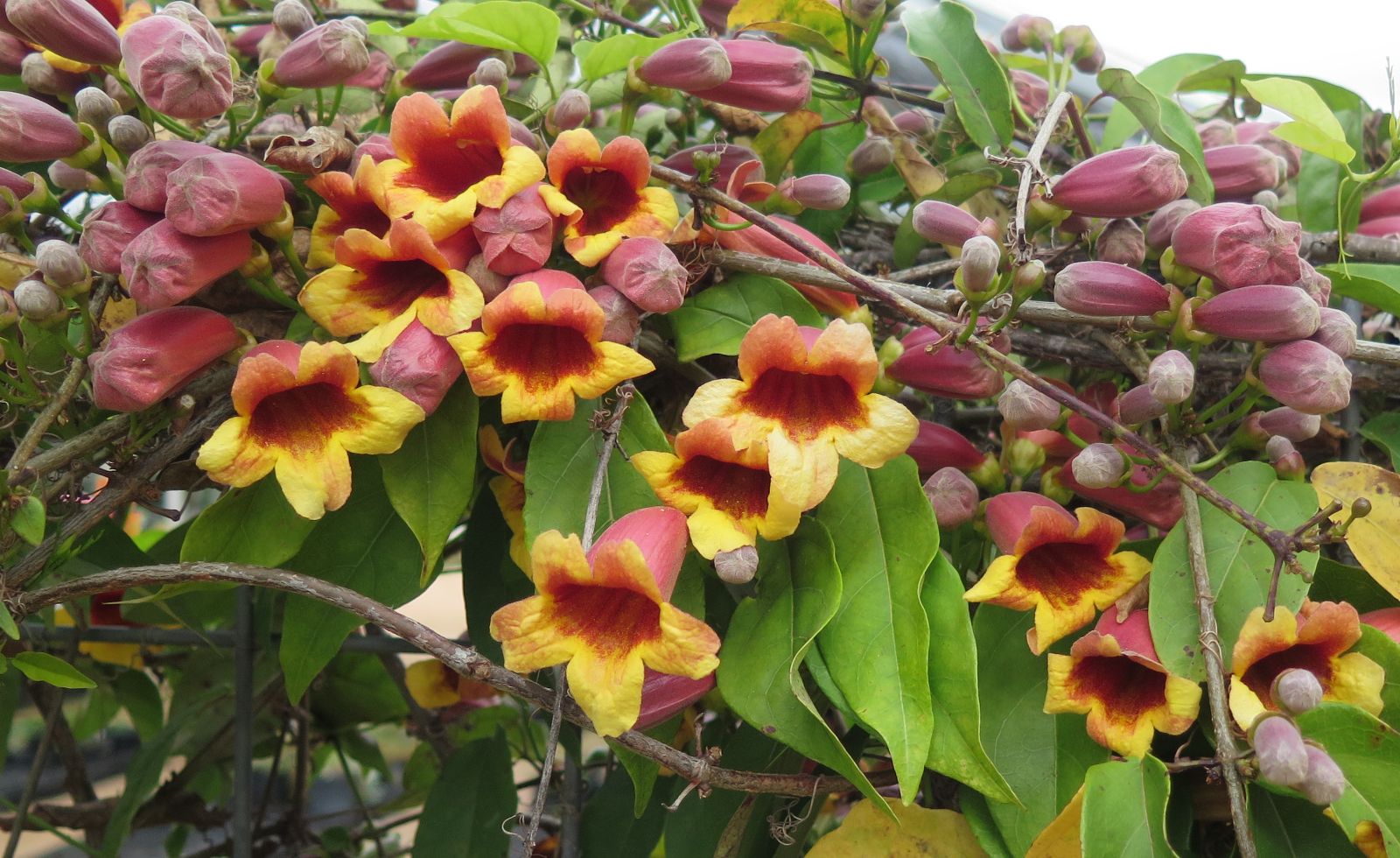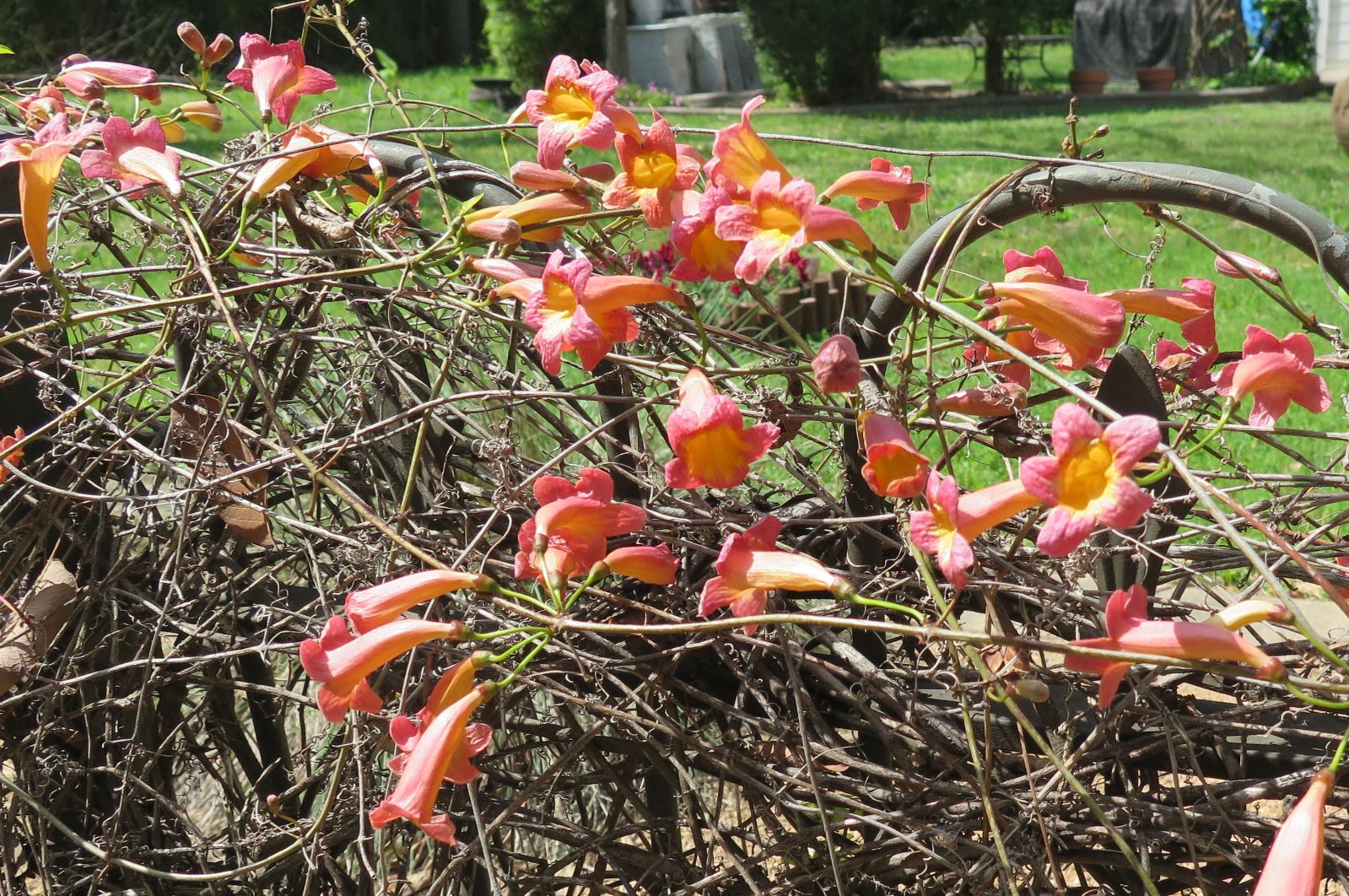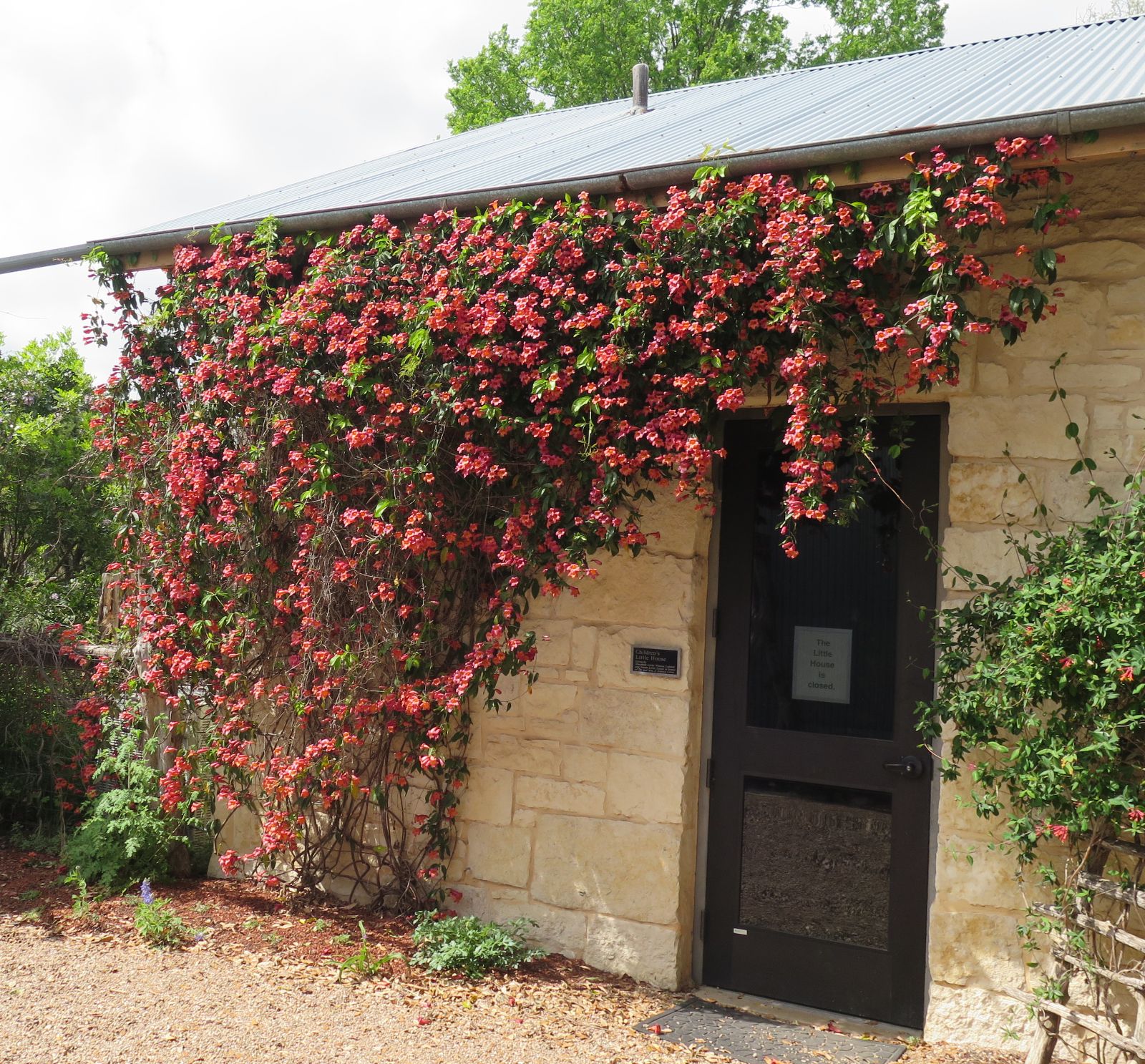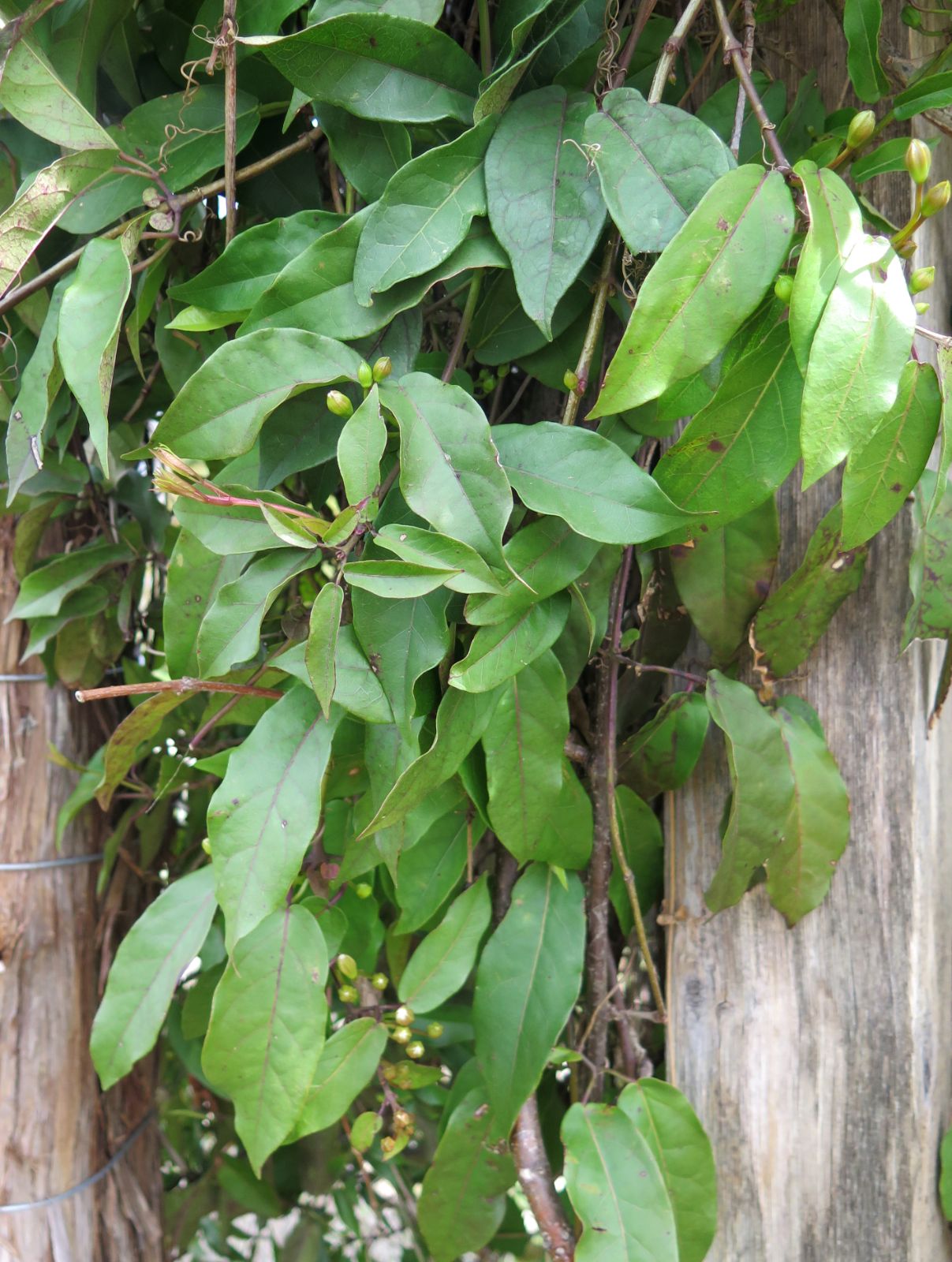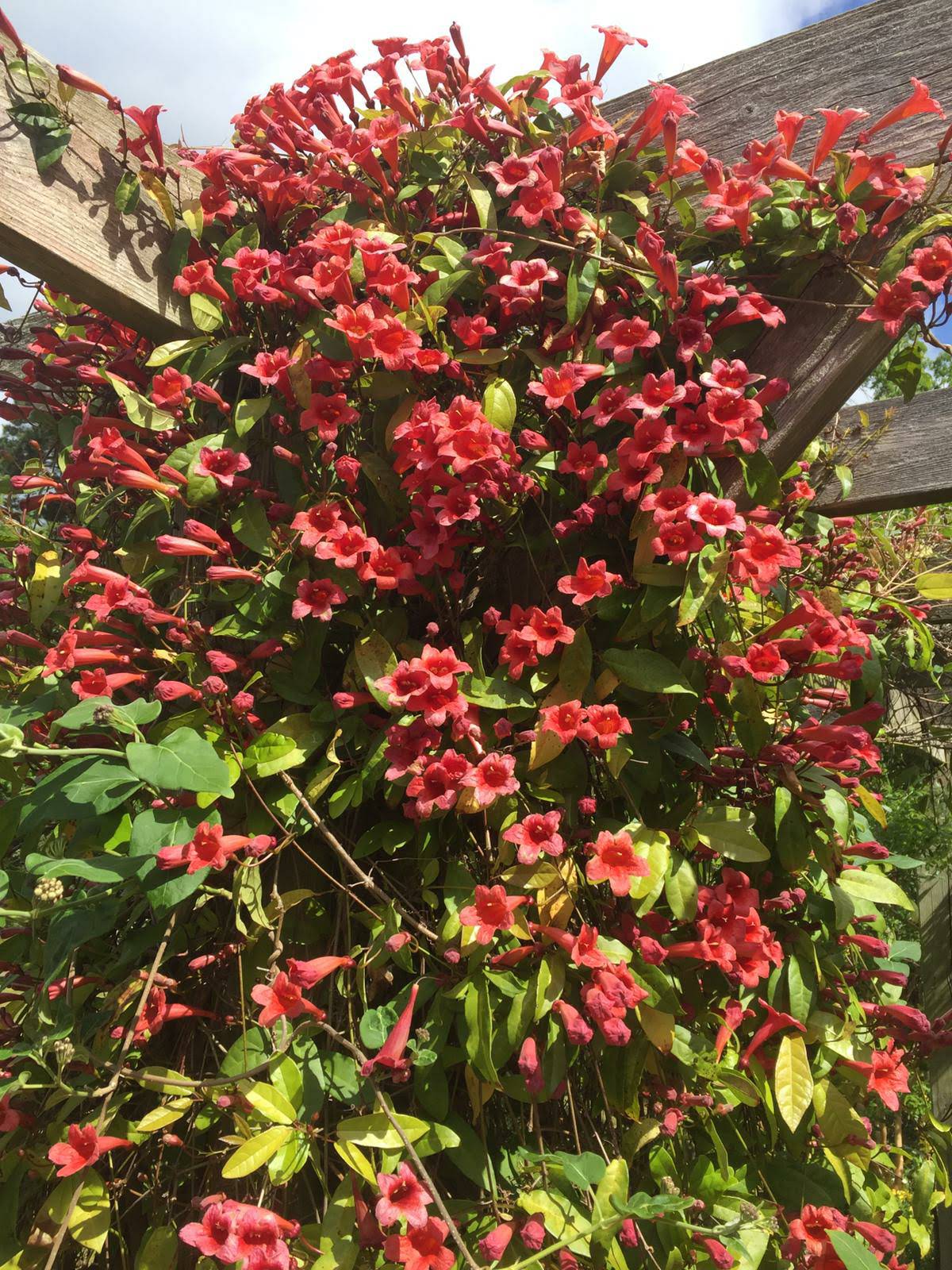Bignonia capreolata
Credits
Article from Bean's Trees and Shrubs Hardy in the British Isles
Recommended citation
'Bignonia capreolata' from the website Trees and Shrubs Online (treesandshrubsonline.
Other taxa in genus
An evergreen or semi-deciduous climber (according to climate), in nature ascending trees to a height of 40 to 50 ft; stems long, slender, glabrous except at the joints. Leaves opposite, composed of two leaflets on a common stalk 1⁄2 in. long, which is prolonged into a branched tendril. Leaflets oblong-lanceolate or ovate-lanceolate, 2 to 5 in. long, 1⁄2 to 2 in. wide; heart-shaped at the base, tapered at the apex, glabrous and deep green; stalk 1⁄2 in. long, hairy on the upper side. Flowers orange-red, clustered in the leaf-axils, each on a stalk 1 to 11⁄4 in. long. Corolla between tube- and funnel-shaped, 11⁄2 to 2 in. long, 11⁄4 in. wide at the mouth, where it spreads into five ovate, rounded lobes. Calyx bell-shaped, 3⁄8 in. long, shallowly five-toothed. Pod about 6 in. long, slender, flattened. Blossoms in June. Bot. Mag., t. 864.
Native of the south-eastern United States; introduced in 1710. In order to succeed near London this handsome climber must have a sheltered, sunny wall. The popular name refers to the cross-like appearance of the wood when cut through transversely.
In Bot. Mag., t. 6501, a form is illustrated which differs from the type in its darker, red-purple flowers and longer, narrower leaves.

